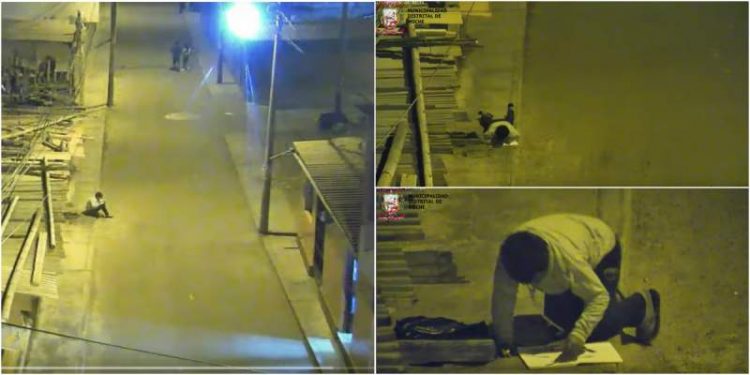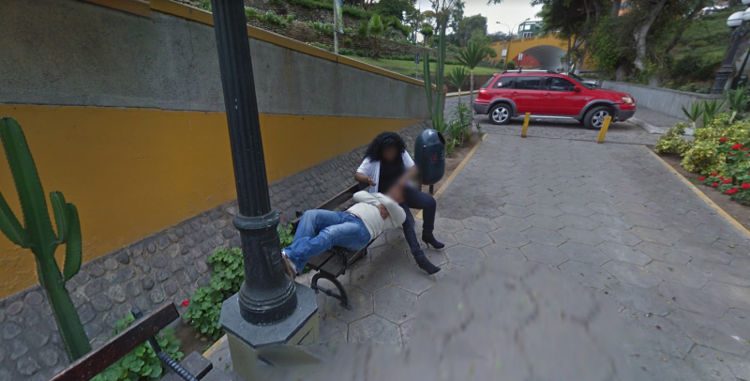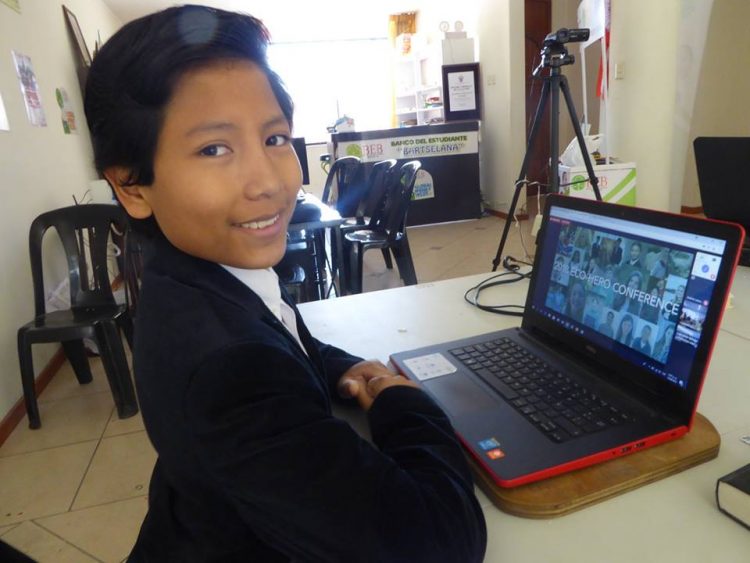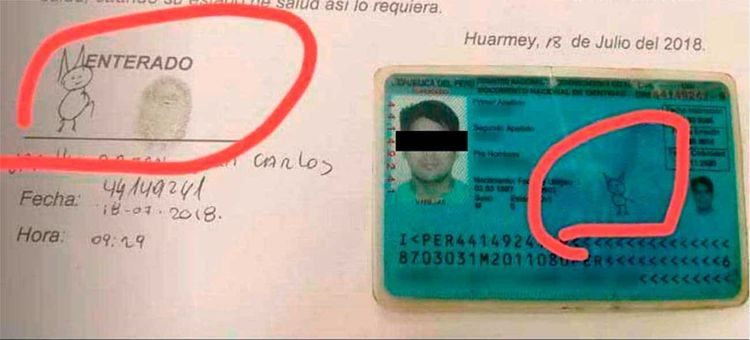12-Year-Old Boy Goes Viral for Doing His Homework Under a Streetlight Because Family Can’t Afford Electricity

CCTV footage showing a 12-year-old boy from the town of Moche, in Peru, doing his homework on the sidewalk, under a streetlight, because his family can’t afford electricity in their home, has been viewed millions of times on social media after being shared by local police. Staff at the Moche police department first noticed Víctor Martín […]
Woman Claims That Possessed Doll Attacked Her Boyfriend Because It Was Jealous

A Peruvian woman claims that her possessed doll frightened her boyfriend into leaving her after it attacked him out of jealousy. Berliz, a young woman from Callao, Peru, told reporters that Deisy, a doll she received from her mother as a Christmas gift when she was younger, has been exhibiting Poltergeist-like behavior, including moving its […]
Man Divorces Wife After Seeing Her with Another Man on Google Street View

A Peruvian man recently divorced his wife after discovering her infidelity while looking around on Google Street View. The unnamed man who recently posted photographic proof of his discovery on Facebool, was allegedly looking for the fastest way to reach the Bridge of Sighs, in Barranco, Lima, when he came upon a familiar figure – […]
This Boy Founded His Own Bank When He Was Only 7 Years Old

Many children dream of becoming entrepreneurs when they grow up, but very few start as early as, Jose Adolfo Quisocala Condori, a Peruvian boy who started a children’s savings bank when he was only 7 years old. Today, his bank serves over 2,000 clients and offers various financial services. Jose got the idea for a children’s savings […]
Lenin Tries to Stop Hitler from Becoming Mayor of Peruvian Town

Yungar, a remote town in the Peruvian Andes, has been receiving worldwide attention in the past couple of weeks, because of the efforts of a man named Lenin to stop one of the candidates, named Hitler, from running in the upcoming municipal elections. Hitler Alba Sánchez, also known as ‘Hitler of the Andes’ or ‘The […]
Peruvian Man Goes Viral for His Unusual Signature

A Peruvian man recently got his five minutes of online fame after his curious signature went viral on social media. Instead of the typical scribble or just a simple ‘X’, this guy always signs his name with the childish drawing of a kitten. The man’s signature went viral after a photo of his ID next […]
Peruvian Police Capture Inmate Who Escaped Prison by Leaving Twin Brother in His Place

Alexander Jheferson Delgado, a convicted sex offender and burglar from Peru, was captured by police a year after successfully escaping prison by drugging his identical twin bother, who had come to visit him, and putting on his clothes. On January 10th, 2017 Alexander Jheferson Delgado pulled off one of the most incredible prison escapes in history, […]
Peruvian Diver Left Looking Like a Balloon After Rising From the Depths Too Fast

Alejandro Ramos Martínez, a seafood diver from Pisco, Peru, recently made international headlines after a terrible accident left him looking like a human balloon. He apparently rose from a depth of 30 meters too fast, which caused the nitrogen in his blood to form giant bubbles that adhered to his muscles, leaving him looking deformed. […]
Peruvian Family Claims Possessed Doll Has Been Terrorizing Them for Years

A seemingly harmless doll has been dubbed the “Peruvian Annabelle” after the family that owns it claimed that they have been terrorized by it for the last seven years. In a YouTube video that recently went viral, the Nunez family, in Callao, Peru, explain that they have witnessed various paranormal events connected to “Sarita”, a blonde, […]
Mysterious Boiling River in Peru is So Hot It Boils Animals Alive
There is a mysterious river flowing deep through the Amazon rainforest in Mayantuyacu, Peru, that can literally boil small animals almost instantly. While water temperatures along the 6.4-km-long river range between 50 and 90 degrees Celsius, in some parts almost reaching the boiling point of 100 degrees. That’s hot enough to cause third-degree burns in a matter of […]
Cliffside Capsule Hotel in Peru Offers Stunning Views, Is Not for the Faint-of Heart
The Nature Vive Skylodge hotel, in Cusco, Peru, is made up of three transparent capsules attached to the side of a cliff, 1,312 meters above the beautiful Sacred Valley, once the heartland of the Inca Empire. Reaching this unique hotel is an adventure in itself, but once inside the pods, thrill-seekers can enjoy a stunning view […]
Controversial ‘Wall of Shame’ in Peru Separates the Rich from the Poor
Everyone talks about the gap between the rich and poor, bit nowhere is this barrier more clear than Lima Peru, where a 10-kilometer concrete wall topped with barbed wire separates one of the cities richest communities from one of the poorest. Located on the outskirts of Lima, the Wall of Shame’, also nicknamed ‘Peru’s Berlin Wall’, […]
Smart Billboard Produces 100 Liters of Drinking Water a Day Out of Thin Air

Researchers in Peru have teamed up with an ad agency to provide a viable solution to the problem of potable water shortage in Lima, the world’s second-largest city in the world. Their creation is a s simple as it is ingenious – a billboard that turns air humidity into drinking water. Located northern edge of […]
The Guinea Pig Festival of Huacho Has Rodents on the Menu

It’s funny how a cute and furry pet in one part of the world can be considered a delicacy in another. But that’s exactly what guinea pigs are in the small town of Huacho in Peru. In fact, they have a whole festival dedicated to dressing up and cooking the hairy rodents – The Festival […]
The Floating Man-Made Islands of Lake Titicaca

The people of Uros, a small South American tribe in Peru, have made living arrangements for themselves that are so unique, they’re not found anywhere else in the world. These people live most of their lives on man-made floating islands? The islands were created on Lake Titicaca in Peru, for the protection against other stronger […]
